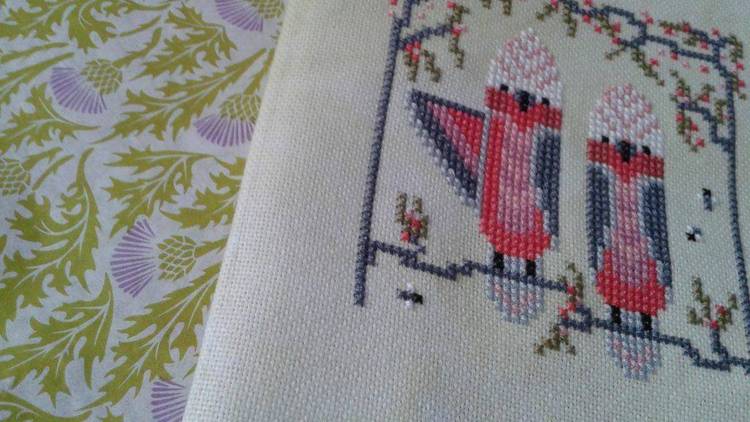Jan 032018
Full Description of File
Corss Stitch Odds n' Ends in FLoss, Silks,
and Signing
and Signing
| Corss Stitch Odds n’ Ends in Floss, Silks, and Signing. | |||
|---|---|---|---|
| File Name | File Size | Zip Size | Zip Type |
| CS-RTFLS.TXT | 2306 | 1031 | deflated |
| CS-SERCH.TXT | 1274 | 632 | deflated |
| CS-SILK.TXT | 1041 | 509 | deflated |
| DESC.SDI | 57 | 56 | deflated |
| FILE_ID.DIZ | 57 | 56 | deflated |
Download File XS-ODDS.ZIP Here
Contents of the CS-RTFLS.TXT file
-----------------------------------
The "Right" End of the Floss
-----------------------------------
You may have read posts which talked about "the right end," "direction of the
thread," or "Z-twist and S-twist." First let's talk about what it means, then
we'll look at why you should (or shouldn't) care.
Just to make things a little clearer -"Z" and "S" are used to describe the
twist in a yarn - any yarn regardless of what fibre it is spun from. Just
take a piece of thick yarn and hold it up in front of your eyes. If the
twist goes from top right to bottom left it is called "Z" (the slant of the
twist equaling the slant of the downstroke in the letter). If it slopes
from top left to right bottom it is of course an "S".
To find the right end for a six-strand length of floss:
~ The end that comes out of the skein is the right end.
~ If the floss is already cut, hold the two ends in one hand, between the
thumb and forefinger. Allow about one half inch from each end to stick
up. Now tap lightly down onto both ends at once with your other
forefinger. The end that spreads more, or "blossoms" is the "right" end.
To find the right end for a single strand of floss, hold it up and run it
between your thumb and forefinger. The direction that feels smoother is the
right direction, and the top is the right end.
Some people find it easier to separate a strand when it is removed from the
right end. They have less problem with tangling.
So, now you know how to find it. Why should you? Unfortunately, this is one
of the few topics in counted cross stitch that people tend to get religious
about. Even the professionals don't agree.
The two main schools of thought:
~ The needle should be threaded with the right end. The stitches lie
better, and knots are less likely to happen. It is bad form to stitch
without paying attention to thread direction.
~ If it takes a magnifying glass to see the difference in the stitches,
keeping track of the right end of the thread is a waste of time.
Besides, the loop method of starting stitches (where by definition one
strand is the right way and one the wrong) can help keep the back of the
picture neat.
The "Right" End of the Floss
-----------------------------------
You may have read posts which talked about "the right end," "direction of the
thread," or "Z-twist and S-twist." First let's talk about what it means, then
we'll look at why you should (or shouldn't) care.
Just to make things a little clearer -"Z" and "S" are used to describe the
twist in a yarn - any yarn regardless of what fibre it is spun from. Just
take a piece of thick yarn and hold it up in front of your eyes. If the
twist goes from top right to bottom left it is called "Z" (the slant of the
twist equaling the slant of the downstroke in the letter). If it slopes
from top left to right bottom it is of course an "S".
To find the right end for a six-strand length of floss:
~ The end that comes out of the skein is the right end.
~ If the floss is already cut, hold the two ends in one hand, between the
thumb and forefinger. Allow about one half inch from each end to stick
up. Now tap lightly down onto both ends at once with your other
forefinger. The end that spreads more, or "blossoms" is the "right" end.
To find the right end for a single strand of floss, hold it up and run it
between your thumb and forefinger. The direction that feels smoother is the
right direction, and the top is the right end.
Some people find it easier to separate a strand when it is removed from the
right end. They have less problem with tangling.
So, now you know how to find it. Why should you? Unfortunately, this is one
of the few topics in counted cross stitch that people tend to get religious
about. Even the professionals don't agree.
The two main schools of thought:
~ The needle should be threaded with the right end. The stitches lie
better, and knots are less likely to happen. It is bad form to stitch
without paying attention to thread direction.
~ If it takes a magnifying glass to see the difference in the stitches,
keeping track of the right end of the thread is a waste of time.
Besides, the loop method of starting stitches (where by definition one
strand is the right way and one the wrong) can help keep the back of the
picture neat.
January 3, 2018
Add comments
